Exploring the Fascinating History of School Buses
published on October 23, 2023 by Sonia Mastros
Transportation Management Software, school bus routing software, school bus tracking software, student transportation software, Student School Bus Safety, route efficiency, school bus route planning software, school bus route optimization, school bus route scheduling software
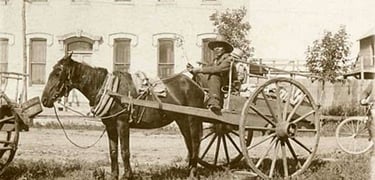 School buses have been a cornerstone of student transportation and education for over a century. But did you know that their fascinating history dates back to the early days of carriages drawn by horses?
School buses have been a cornerstone of student transportation and education for over a century. But did you know that their fascinating history dates back to the early days of carriages drawn by horses?
In this blog post, we will explore the evolution of school buses, delving into the history of the first bus from their humble beginnings as “kid hacks” to the modern, technologically advanced vehicles we see today.
Key Takeaways
-
Exploring the history of school buses, from carriages drawn by horses to modern motorized vehicles.
-
Wayne Works revolutionized the industry with safety and design innovations while Dr. Frank Cyr’s 1939 Conference at Columbia University resulted in national standards including “school bus yellow”.
-
School buses have experienced numerous safety improvements and technological advancements over time, as well as an increasing focus on green alternatives such as electric vehicles for environmental preservation.
From Horse-Drawn Carriages to Motorized Vehicles, When School Buses Began
Rural children in the late 1800s faced the daunting challenge of accessing schools often situated miles away from their residences. To tackle this concern, the first "kid hacks" or carriages drawn by horses were introduced to provide student transport to and from school. These early school busing were a far cry from the vehicles we know today, but they marked the beginning of a long and storied history in student transportation in rural areas.
School Hacks and Cars
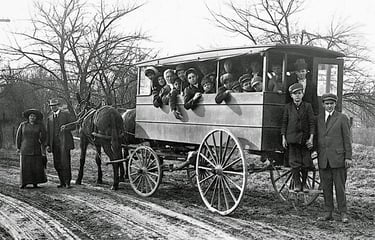 Horse-drawn wagons or carriages, known as “kid hacks,” served as the earliest versions of school buses, where students sat on wooden benches situated around the wagon’s edge.
Horse-drawn wagons or carriages, known as “kid hacks,” served as the earliest versions of school buses, where students sat on wooden benches situated around the wagon’s edge.
In 1892, the first “school car” was constructed in Indiana, featuring sides but no roof, with children sitting on benches and a horse pulling the primitive bus. This groundbreaking invention had a considerable effect on society, as it enabled the transportation of rural children to school, which was previously unattainable.
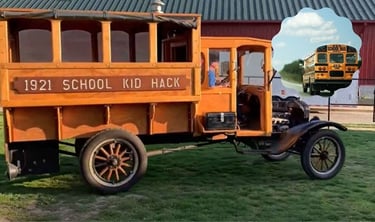
With the rise of automobiles, a transition from horse-drawn wagons to motorized trucks marked a significant shift in school bus production. In the 1920s, enclosed passenger compartments and metal-framed seat backs were introduced, marking the beginning of a focus on school bus safety.
However, it wasn’t until the 1930s that more significant changes in school bus design took place, thanks to the innovations of Wayne Works. This turning point in student transport led to the introduction of new school buses, now often owned by school districts, featuring sturdier wood construction and more advanced safety features.
Transition to Motorized Trucks
The 1930s witnessed a significant advancement in school bus design, as school bus manufacturers Wayne Works introduced the first motorized school buses with steel construction and glass windows, which were among the first school buses of their kind.
This period marked an important milestone in school bus history, as these early motorized buses still lacked many of the motor vehicle safety standards we take for granted today, with students often riding on wooden benches or sitting in the truck bed with no seat belts or restraints.
Despite the shortcomings, this era signified a pivotal evolution in school buses, particularly in their role in transportation of students within the school district, and became an important chapter in the history of the school when school buses began. The introduction of warning lamps and the implementation of safety regulations helped improve the transportation of students, preventing accidents that previously led to tragic incidents like students killed.
This change was crucial, especially considering the prevalence of one room schools and the need to ensure the safe travel of students from their homes to these educational institutions on school buses dates.
The Birth of the Modern School Bus Industry
In the 1930s, the modern school bus industry came to life, driven by the innovations of companies like Wayne Works and visionaries like Dr. Frank Cyr. The introduction of the all-steel bus body design by Wayne Works revolutionized school bus safety and efficiency. This innovation was particularly significant for body and chassis manufacturers.
Meanwhile, Dr. Cyr’s 1939 conference at Columbia University led to the adoption of 44 national standards for school buses, including the use of the iconic “school bus glossy yellow” color for improved visibility. This initiative was a crucial step forward for transportation officials seeking to enhance student transportation.
Wayne Works Innovations
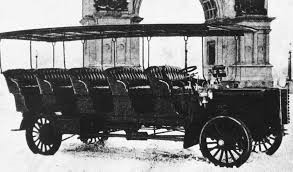
The development of the student transportation sector owes much to Wayne Works, credited with numerous safety and design innovations. They introduced the pioneering all-steel student transporting vehicle body design in the 1930s, which included safety glass windows, two passages, and an entry door in the front with the rear entry door serving as an emergency exit. This innovative design improved the safety and comfort of students within the passenger compartment.
Beyond the all-steel body design, Wayne Works continued to innovate, introducing:
-
Guard rails on the sides of school buses
-
Inboard wheelchair lifts
-
High-headroom doors
-
Improved driver ergonomics
These advancements not only enhanced safety but also improved the overall experience for both students and drivers.
Dr. Frank Cyr and the 1939 Conference
Known as the “Father of the Yellow School Bus,” Dr. Frank Cyr was instrumental in setting national standards for school buses. His 1939 conference at Columbia University resulted in the adoption of 44 national standards, including:
-
The use of “school bus yellow” for visibility
-
The requirement for buses to have a maximum passenger seating capacity of 65
-
The use of steel construction for increased safety
-
The inclusion of emergency exits and fire extinguishers
The distinctive color of “school bus yellow” was chosen due to its ability to be registered quickly by the human eye and its visibility in early morning and evening light, making the national school bus glossy yellow an ideal choice.
These standards laid the groundwork for the modern industry school bus and its ongoing commitment to safety and efficiency.
School Bus Safety Improvements and Technological Advancements
Driven by evolving demographics and the needs of school districts, school buses, equipped with their own bus body, have witnessed extensive technological advancements and safety improvements over the years.
From the impact of the Baby Boomer generation on bus design to the incorporation of modern technologies like GPS and Wi-Fi, these buses have continually adapted to meet the evolving needs of students and schools. The addition of perimeter bench seating has also enhanced the comfort and safety of students during transit.
Baby Boomer Impact
Born between 1946 and 1964, the Baby Boomer generation led to a considerable surge in the school population, triggering the need for larger diesel engine buses and shorter buses for both rural and urban districts. This demographic shift not only influenced the size and engine type of school buses but also placed a greater emphasis on safety features and regulations to accommodate the growing number of students.
Safety Features and Regulations
From the 1970s onwards, diverse safety features and regulations have been incorporated in school buses to prioritize student safety. In 1977, school bus seats were outfitted with taller structures and thick padding on both the front and back, implementing the concept of compartmentalization to create a barrier cushion in the event of a crash.
Additionally, amber lights and extended stop arms were introduced following recommendations from the national transportation safety board.
In recent years, even more safety features have been implemented, such as:
-
seat belts
-
rearview cameras
-
electronic stability controls
-
stop arm cameras
These enhancements have greatly improved school bus safety, ensuring that students can travel to and from school securely, especially when approaching a stopped school bus, with the help of national school bus chrome features.
Modern Technologies
Modern school buses come equipped with cutting-edge technologies, bolstering safety, efficiency, and communication. GPS tracking systems provide real-time information on bus locations and estimated arrival times, helping parents stay informed about their children’s whereabouts. On-board Wi-Fi allows students to utilize their time on the bus for studying and completing homework, while also enabling buses to serve as mobile “hot spots” for internet access during remote learning situations.
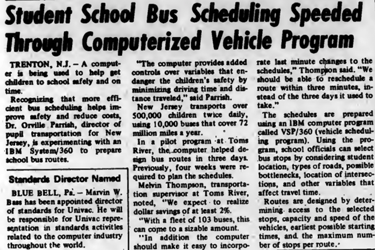
In Trenton, NJ 1969 the first computer-optimized route planning was made and run on an IBM computer. School bus routes were planned by computers for the very first time and a fleet of 103 buses, which at that time, was HUGE.
From Amber lights, to stop arms, to taller seat backs for safety and on-board cameras; bus routing software grew as well in advancement.
Additionally, the school bus body and emergency exits are designed to comply with federal motor vehicle safety regulations, ensuring the utmost security for students. These modern technologies and safety features have transformed school buses into an integral part of the educational experience, ensuring that students can learn and grow both inside and outside the classroom.
The Future of School Buses: Going Green
With growing environmental concerns, the future of school buses leans towards embracing more sustainable alternatives. Propane and electric buses have emerged as popular alternatives in the 21st century, reducing emissions and fuel costs while maintaining the same level of safety and efficiency.
Electric school buses, in particular, represent a significant step forward in green technology, helping to improve pollution and safety standards while contributing to the preservation of the environment. As we look towards the future, it is clear that school buses will continue to evolve, adapting to the changing needs of students, schools, and the planet.
Furthermore, ensuring the safety of these buses on the road requires efficient warning lights, comprehensive mirror systems, and reliable flashing lights. Moreover, it is imperative to inspect these buses regularly to prevent any potential body panel separation or issues with the truck frames and body joints in order to guarantee the safety of the students and the smooth operation of school districts.
School Bus Driver Requirements and Training
School bus drivers are required to meet specific qualifications and participate in consistent training to safeguard student safety. In most states, drivers must:
-
Be at least 18 years old
-
Have a minimum of six months of driving experience
-
Possess a Commercial Driver’s License (CDL) with a school bus endorsement
-
Have a clean driving record
-
Have a high school diploma or GED
Ongoing training is also crucial for school bus drivers, including special courses and refresher programs that focus on child safety and bus operation. Drivers must also perform checks before departing the bus to ensure that all passengers have disembarked and no one has been left behind. These requirements and training programs help maintain a high level of safety and professionalism among school bus drivers, guaranteeing that students are in good hands during their daily commute.
Summary
History of the school buses is a fascinating journey, showcasing the evolution of student's school transportation from horse-drawn carriages to the technologically advanced vehicles we see today. With a focus on safety, efficiency, and environmental sustainability, school buses have played an essential role in the educational experience for generations of students across the country.
As we look towards the future, it is clear that school buses will continue to adapt and innovate, ensuring that students can safely and effectively reach their destinations and achieve their academic goals.
Frequently Asked Questions
When did the US start using school buses?
By the 1920s, the use of "school buses" had become more commonplace, with reports of "kid hacks," or wagons or carriages pulled by horses, dating back to the 1880s.
Who invented the first school bus?
Albert Luce, Sr. is credited with inventing the first school bus in 1925 by mounting a purchased wood body to a Ford truck frame. His 1927 Blue Bird is the oldest surviving school bus in America. With the growing need to transport students efficiently, more schools are now investing in similar transportation solutions. Additionally, as a successful ford dealership owner, Luce continued to contribute to the automotive industry even beyond the realm of school transportation.
What is a brief history of buses?
The first public bus system was introduced in 1826 for passengers, utilizing carriages drawn by horses. Steam buses followed in the 1830s and electric trolleybuses were developed in 1882. Motor buses, powered by internal combustion engines, appeared in 1895. Ever since, buses have become a mainstay of public transportation systems worldwide.
How much does a school bus cost in Ohio?
A school bus in Ohio costs $86,689.45, based on the amount purchased by an Ohio school district for fiscal year 2023.
Why are school buses yellow?
School buses are yellow because it is highly visible, making it easier to recognize early in the morning or evening light. This color was standardized by Dr. Frank Cyr in 1939.


